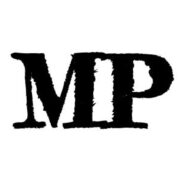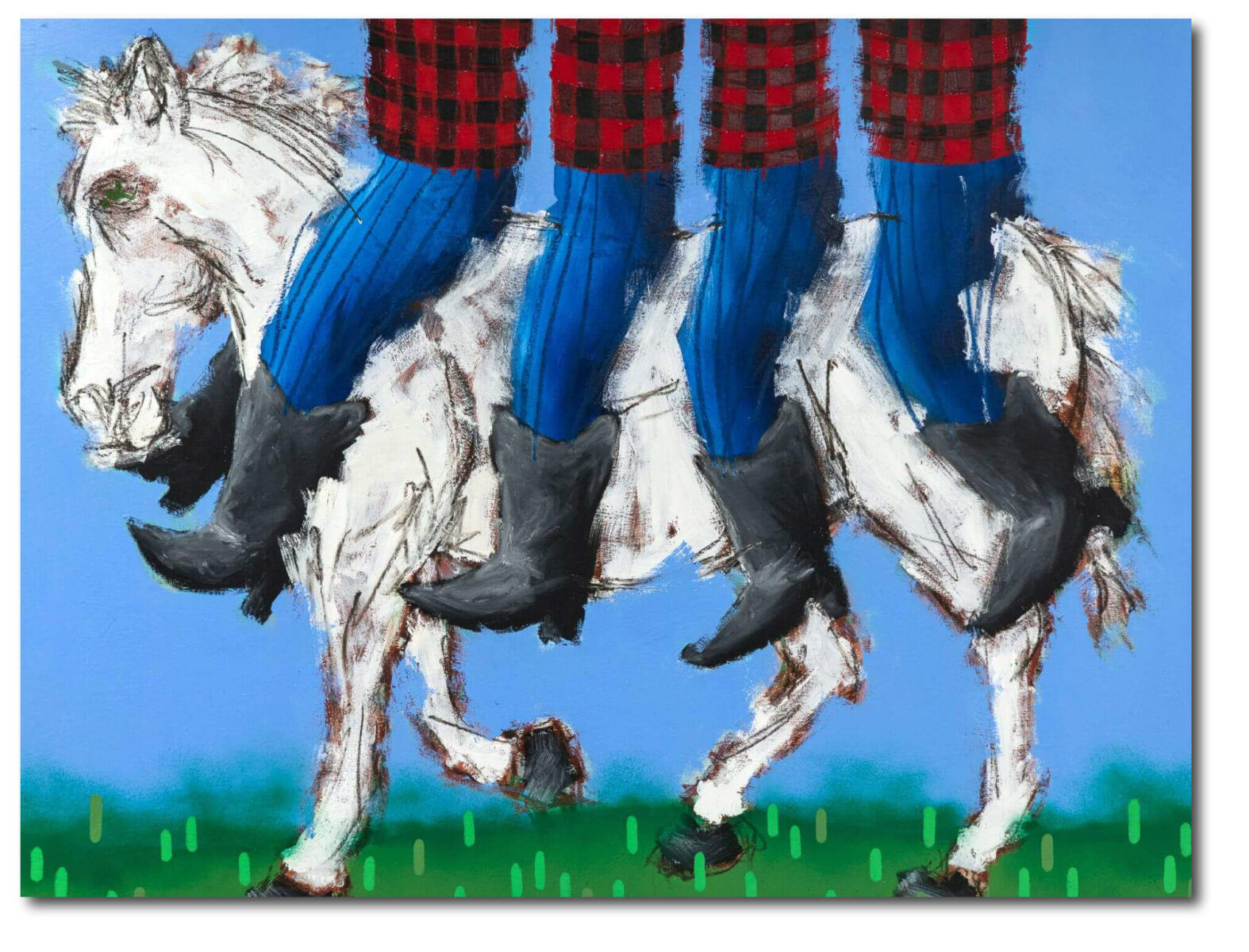
Image courtesy of PUBLIC Gallery
Fresh off his show at PUBLIC Gallery in London, Hunter Potter sits down with Erik Sommer to talk about trench-art ashtrays, hobo markings, his love of Larry McMurtry, and how he finds the beginning of a painting on a blank canvas.
I like this concept of a story’s strength being determined by who is telling it.
(ES) Describe your work for us.
(HP) I like to think of my paintings as exaggerated and abstracted snippets of Americana. The work tends to be on the larger side and generally contains a mixture of acrylic, oil stick, spray paint, and enamels on canvas.
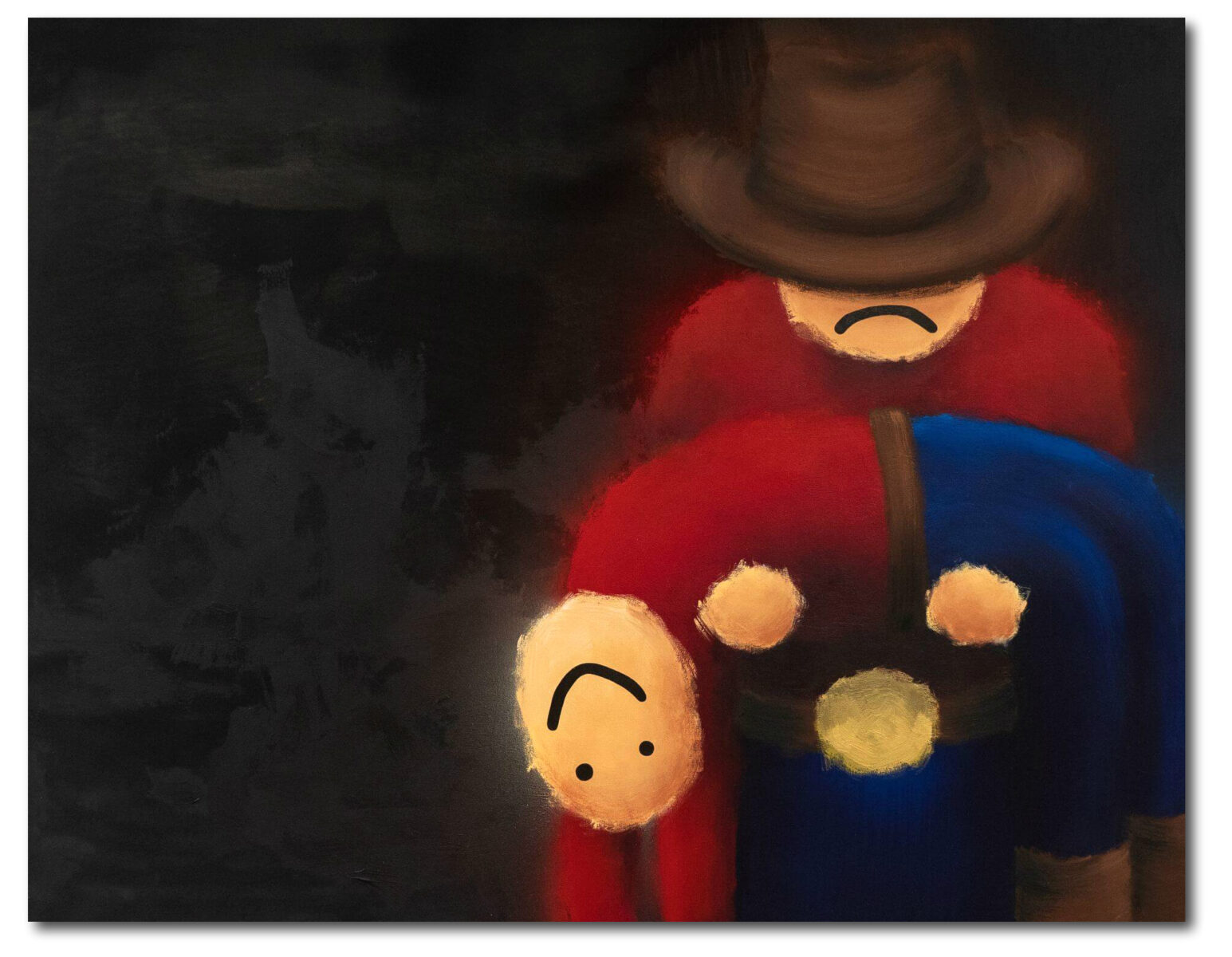
Image courtesy of PUBLIC Gallery
Tell us a bit about your background. Where did you grow up?
I am from nice little farm town in Upstate New York, about thirty minutes outside of Syracuse. I grew up in the country and loved every hillbilly minute of it. That small town, blue collar, “less is more” type lifestyle really clicked with me back then and, in certain ways, still does today. My first job was picking pumpkins on my neighbor’s farm and by the end of high school I was doing commercial roofing and building decks for cash. I liked working hard and earning my keep; there was a certain pride to it. I try to remember all of this while painting in the studio today.
Where do you live and work now?
Today I live in work in Brooklyn, New York. My painting studio is in Bedstuy and my apartment is in Bushwick.
How do you think this has influenced your work?
I think that if I had never left the country to come to the city I would have never grown to appreciate it as much as I do now. Hindsight is always 20/20! It is hard to realize how special certain people, places, and lifestyles are when you are around them every day. As soon as the past became the past, however, the true colors began to shine. It was as if, by stepping away, I was finally able to realize who and what I wanted my work to be about. Distance really did make the heart grow fonder.
Do you remember any artworks or artists as a child that captured your attention?
My family’s house was full of bizarre artistic eye candy. I think I took it for granted growing up, but strange pop, steampunk, Americana, and folk art tidbits lined the place. My dad was an avid collector of oddities and my mom was a garage sale aficionado, two forces that combined for endless trades and trinkets to be scattered around the house. I would spend hours looking through my dad’s collections out in the barn.
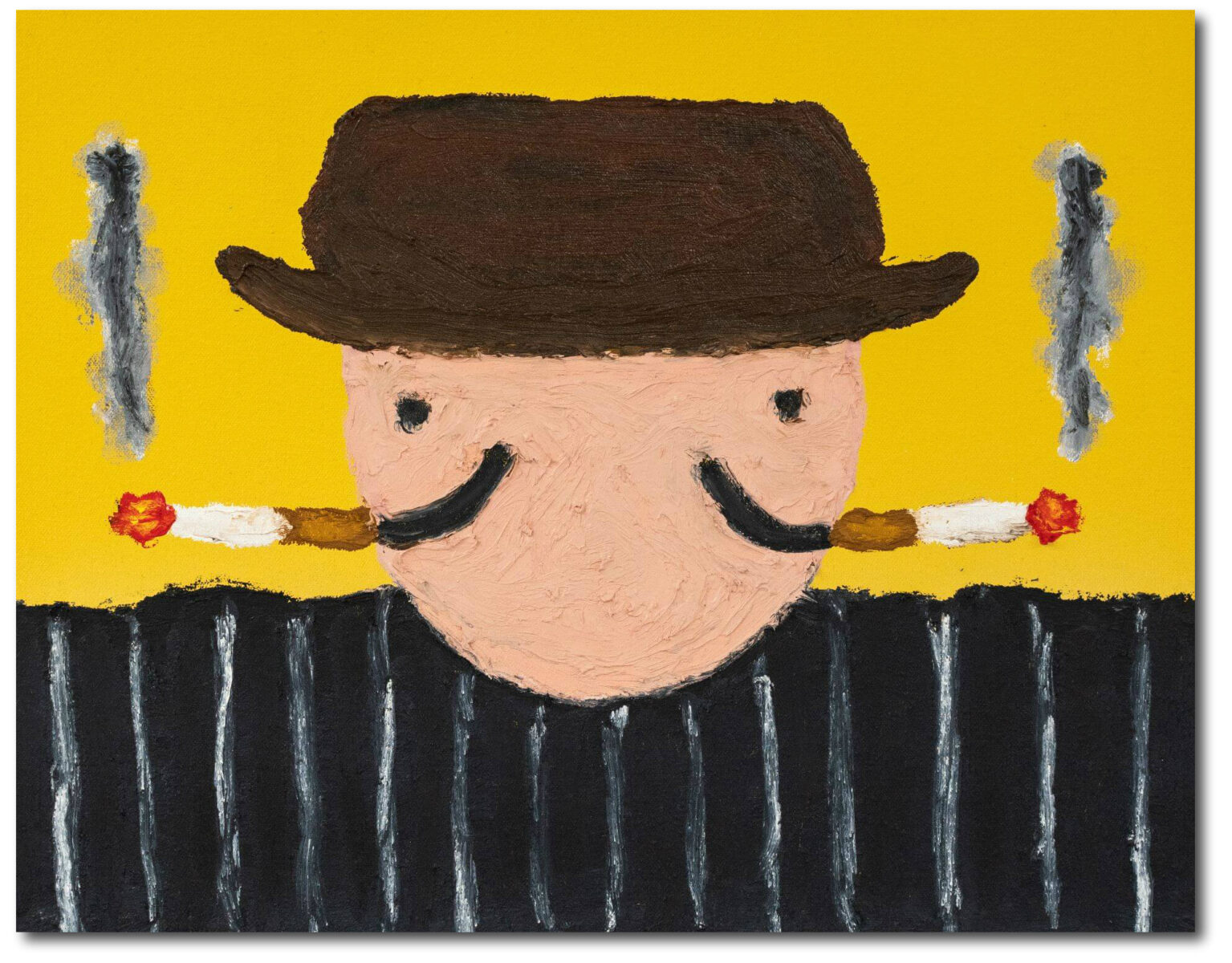
Image courtesy of PUBLIC Gallery
Antique “trench-art” ashtrays made from old WW2 shell casings were all over the place. I vaguely remember that at one point he had a huge sheet of uncut dollar bills snuck out of the treasury that our family puppy wound up eating right off the wall. A huge psychedelic painting from a local artist hung above my parents’ bed depicting my dad behind a bar on a desert island and my older brother, as a baby, floating across the ocean to him. My family’s living room light was one of the enormous Mobil gas station Pegasus circles that was backlit by a bunch of fluorescent tubes. It was all local junk but it was special and, most importantly, it came with a story of how and why it was acquired. This sentimentality stuck with me.
Any artists you are looking at today?
There are so many! I will try to keep the list short and sweet. I am weak in the knees for damn near anything Eddie Martinez creates and have been for quite a while. George Rouy, the London based painter, is always on the mental favorites list. I recently discovered Vojtěch Kovařík and really enjoy what he is making and the scale at which he is doing so. Matt Arbuckle, a friend of mine hailing from the land down under, is another safe bet. I think Matt’s process of dying and submerging the canvas has a certain degree of unpredictability that is really exciting to see. Marco Pariani’s abstractions and general use of color would undoubtedly make the list as well. Paul Wackers’ shelf scenes excite me for sure. I would love to have one of Royal Jarmon’s unfolded automobiles or Nascar scenes hanging on the wall as I type this right now.
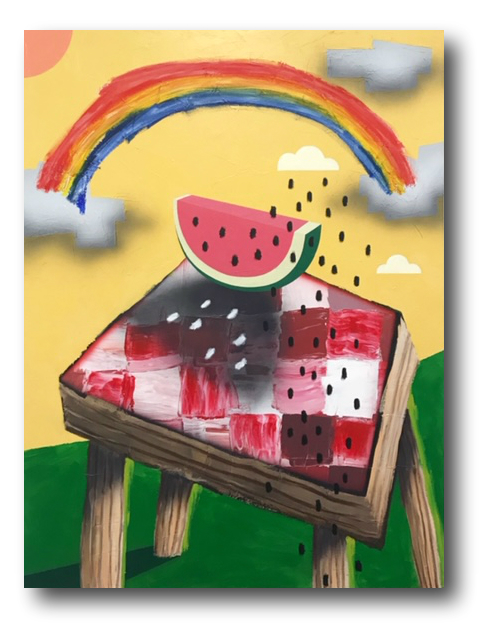
Image courtesy of Hunter Potter
In your writing you mention an Americana and folklore influence. Do you distinguish how these stories and ideas are passed down?
One hundred percent. The mere exaggeration that occurs within folklore and within the representation of “Americana” as a whole is one of my biggest interests. These things grow and mutate and shift as they’re passed down and I love that. I grew up under my dad, a lifetime bartender and story teller, telling tall tales that, though true at their very core, were undeniably stretched and embellished for the audience’s benefit. I like this concept of a story’s strength being determined by who is telling it. I think that is part of what makes small town folklore so interesting—who is speaking it and who is hearing it.
I think this is also what allows certain bits of folklore to survive generations while other tidbits die out along the way. Some stories were simply told better than others. I try to keep this in mind while painting. How can I paint a certain picture, or tell a certain story, to make it as memorable as possible? What do I have to exaggerate? What parts of the story should I omit? This is important. A good campfire story does not shine equal light on every detail!
Are you interested in, and do you take inspiration from, different sources such as music, literature or the spoken word?
The simple answer would be yes. I am in lyrical awe when I listen to certain musicians and keep a constantly growing “notepad” in my iPhone of certain lyrics that I feel deserve a second look. I am an Audible addict and attempt to listen to as many audio books as possible during and in-between painting sessions. I started on Audible by trying to re-listen to my entire high school reading syllabus and have snowballed from there. John Steinbeck, Larry McMurtry and Ken Kesey are some of the usual suspects. Murder podcasts are a safe bet as well but that is a whole other can of worms.
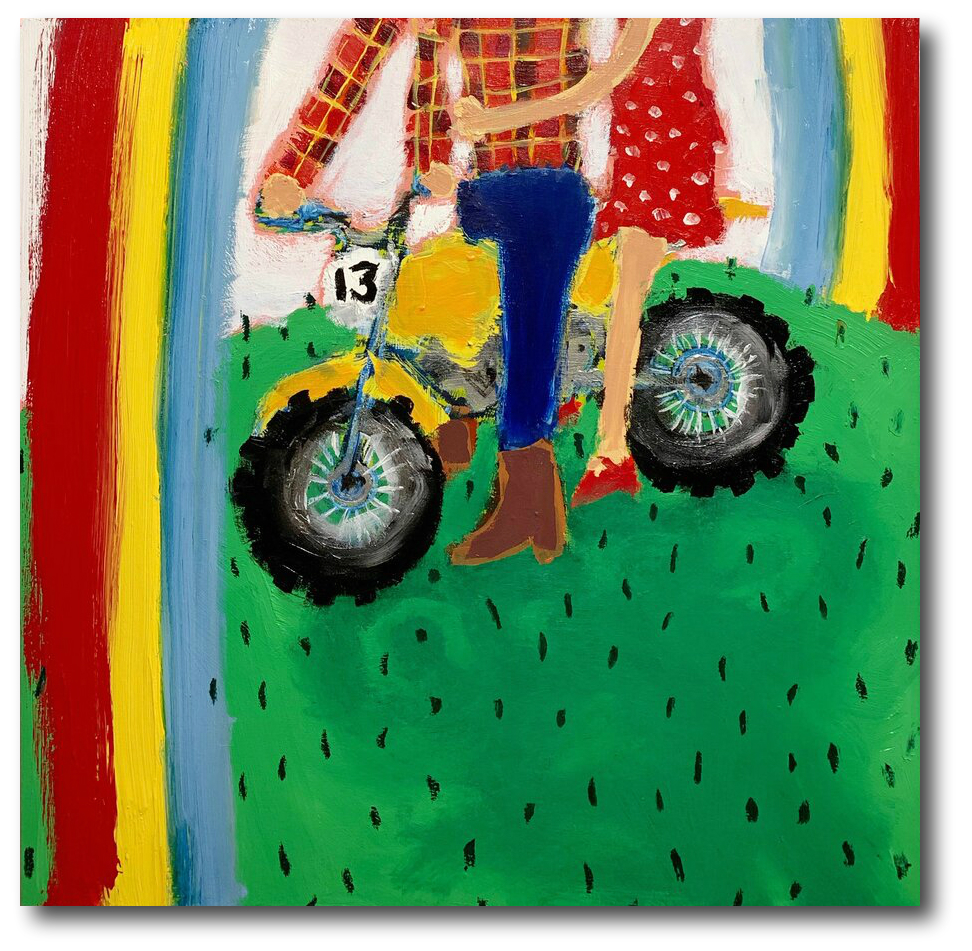
Image courtesy of Hunter Potter
The titles of your work strike me as specific and very purposeful. How do you come up with your titles and what role do they have in the identity of a piece?
The titles are indeed important. I think about them for the entire length of the painting process, generally starting with a rough idea of what I want to say and refining it as I go by repeating it over and over in my head like a crazy person. Sometimes the painting is made to match the title and other times a title is conceived to match what is already happening on the canvas. I guess it just depends on which part gets to completion first, and I enjoy either chain of events. Every now and then I take the easy way out and keep an exact lyric or title as I found it because I realize that, quite simply, I could never improve what is already perfect. Examples of this include The Doors lyric “You were my queen and I was your fool, riding home after school” which I used recently, or “Football Season is Over”, the title of Hunter Thompson’s suicide note, which I have used several times over the last five or six years. There is something nice about being able to pay a subtle homage to a certain individual or lifestyle by using their words as the title for my painting. Most people that read the title will not realize what it is from but I think the small minority that can place it as a former suicide note opening will be able to engage with the painting one step further.
Technically, you have spoken of an endless possibility of painterly mark making. How does this fit into your larger, non-canvas work?
I think my artistic interests have varied so much over the years that I’ve developed a small crush on just about every type of mark making at some point. Freight train graffiti, for example, illuminated the power of good old fashioned spray paint while historic hobo and worker markings showed the longevity of oil and grease sticks. Some time spent blue collar sign painting created a real appreciation for One Shot and Ronan enamels. Everything has its own story regarding how it made its way into my “studio tool box” and I like that. Each type of mark references an entirely different chapter in my painting career. I still work a few commercial painting jobs a year and get the same enjoyment from them as I always have. Paint is paint, fun is fun, and rent money is rent money. I just led a 600 gallon job painting an entire Formula Car race track, logos and all. The job was a riot and made me mighty curious as to how I could start mixing some commercial paint sprayers into my studio practice.
How do you remain challenged?
I go to my studio and paint every single day regardless of whether I have a clear cut idea to execute or not. That is in and of itself quite the challenge; forcing your way through a blank canvas to find the beginnings of a painting is not an easy process when you do not have the slightest idea of which way to head.
What is your normal studio practice like? Any routines or superstitions?
I ride my bike to the studio around 10am and get a coffee, a seltzer, and a few cigarettes at which point I tell myself I will quit cigarettes tomorrow. Once inside I fire up an audio book or the latest unsolved murder podcast and get to work.
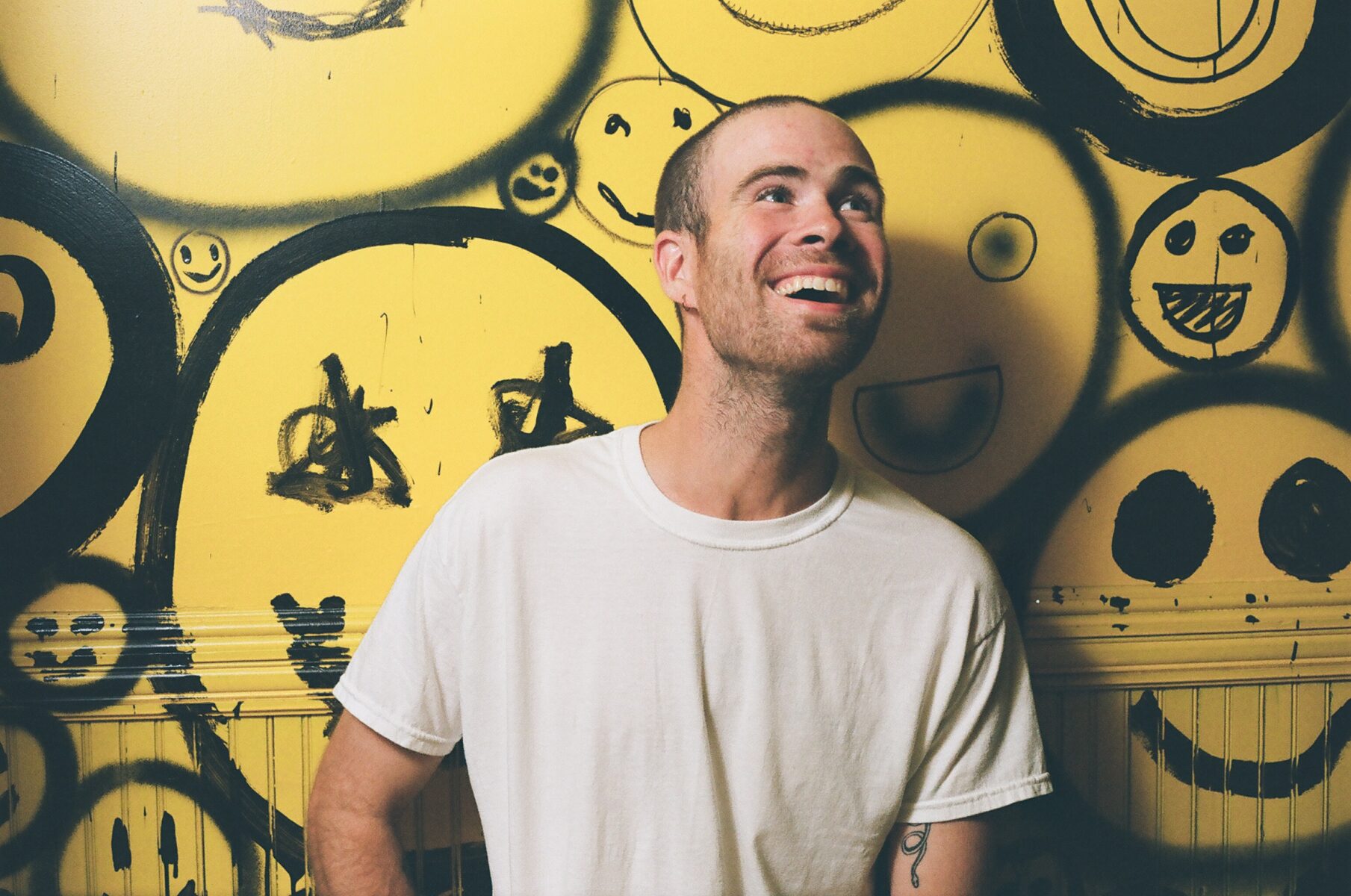
Image courtesy of Deli Grocery
Walk us through how you start and then develop a piece.
Lately I have been starting all of the paintings unstretched on the floor and experimenting until an image starts to come to life at which point I stretch the piece and continue to refine. The first couple days of experimentation involves lots of water and paint thinner poured directly onto the canvas which is the only reason I do not stretch the piece from the get go. I play with abstraction until I start to see something in the mixture that looks like something, like a little kid finding shapes in the clouds, and then it is off to the races.
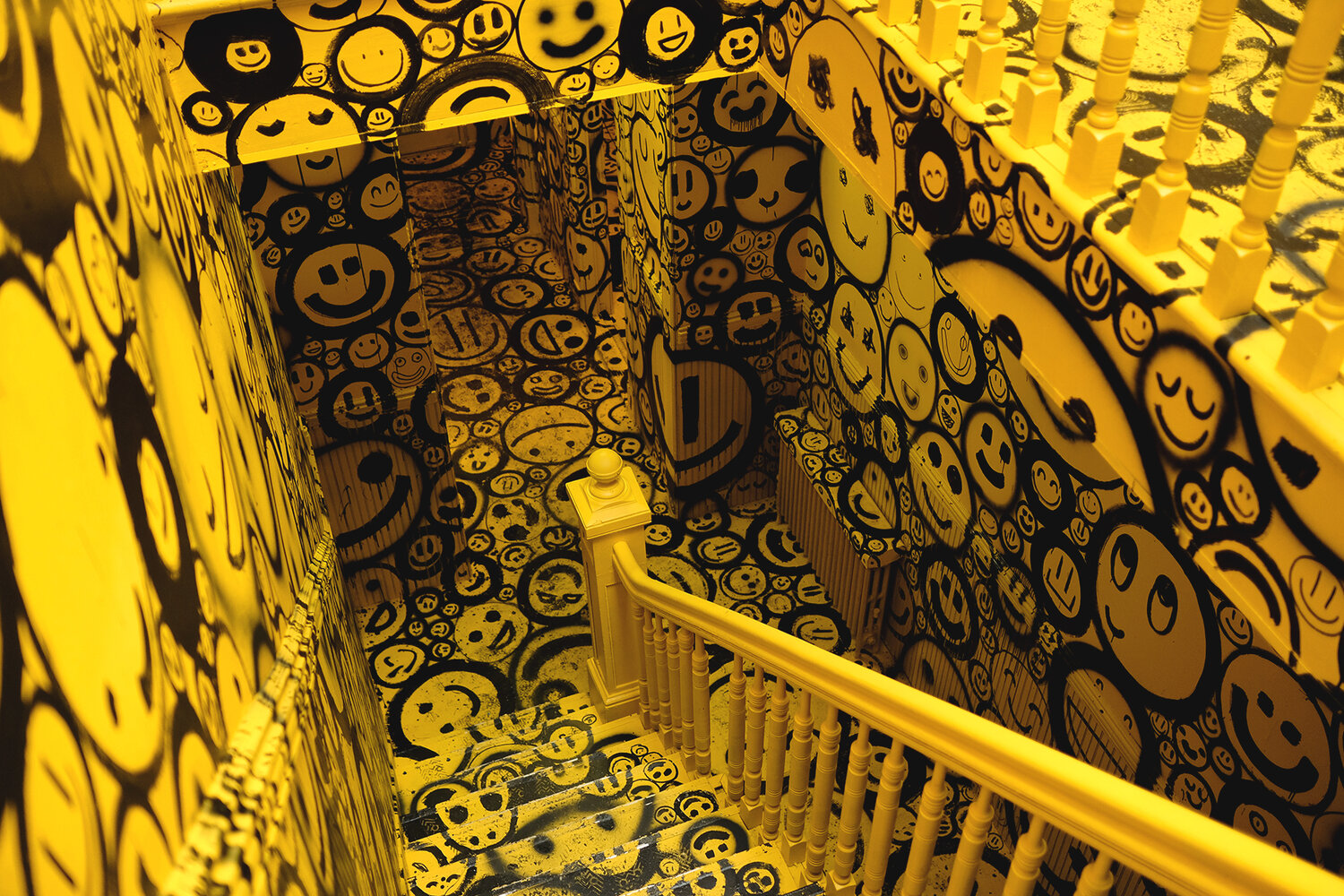
Image courtesy of Deli Grocery
What current themes do you see in today’s art world?
I could be completely wrong, but I think that hard work in the studio is finally starting to pay off for a lot of artists. People were bummed for a long time about the artists that were cheating the system via Instagram and rising to the top overnight. Click bait and viral artists. I think this era is coming to an end. We have all gone numb to Instagram. Long days in the studio are starting to matter more than long lists of followers. This is exciting.
Any recent projects?
Last fall I had a two story installation with Deli Grocery New York and Cycamore Arts to celebrate my month in residence with their program. It was a labor of love to complete and I was really excited to unveil it. This February I had a solo show with PUBLIC Gallery in London that was my first international exhibition.
Finally, what is your favorite color?
All hail Yellow.
To see more of Hunter Potter’s work visit his website and Instagram page.
